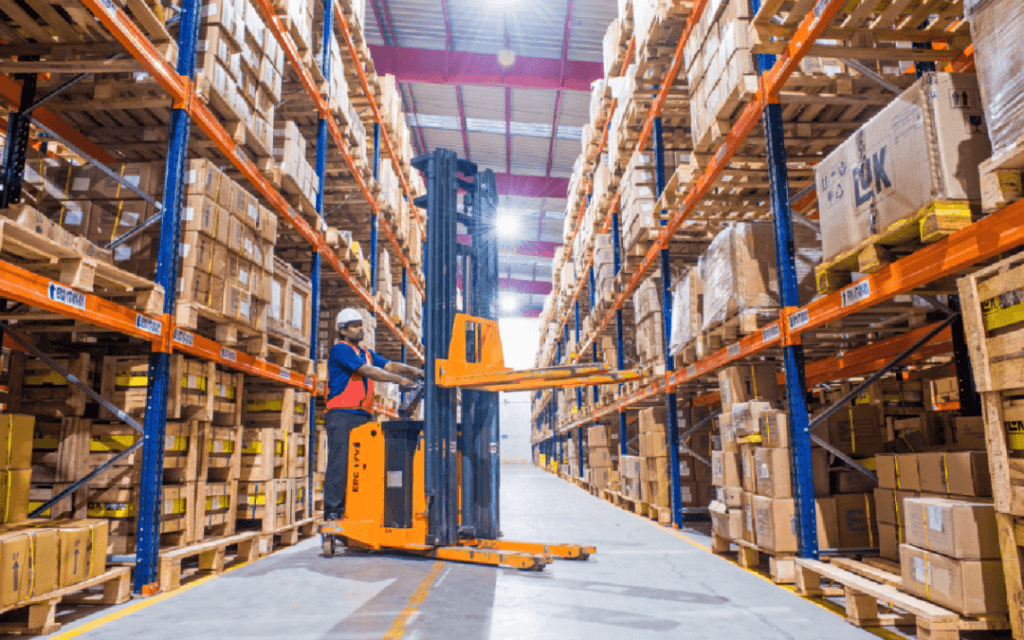7 Types of Warehousing and Concept of Warehousing
Table of Contents
Types of Warehousing
Warehousing
Recognition of the term “warehouse” causes many individuals to see a structure packed with racks upon racks of containers and crates, with dirty, chilly, and gloomy surroundings. The contemporary warehouse is bright, tidy, and an active hive of activity.
Warehouses are huge buildings that hold raw materials or completed products until they are dispersed for sale. Not all warehouses are created equal. Size, features, technology, and location vary greatly, and some are found in a wide variety of places, while others are only in a single spot.

Types of Warehousing
Concept of Warehousing
Storage is crucial to every company While it may appear simple to many, it is full of many options. Warehouses come in many shapes and sizes, catering to various niches. The variables that impact your company’s warehouse selection include the industry, geography, and specific business needs. Choosing the kind of warehouse may significantly influence order fulfilment, which subsequently has a direct impact on your customer relations. As more orders you complete on time, the more the client satisfaction grows.
eCommerce warehousing is not only storage space, but it is also important for order fulfilment because of the close connection between online companies and eCommerce orders. Ecommerce warehouse is vital if you want to succeed in e-commerce. As a result, researching various kinds of warehouses is essential in order to select the correct one for your company.

Types of Warehousing
Distribution Centers
While warehouses have a similar level of storage capacity, distribution centres have much more. These logistics hubs allow for quick transportation of huge volumes of products within a short period of time. Many suppliers provide products, and those products are rapidly distributed to different consumers.
An essential component of the supply chain are these supply chain facilities, since they provide rapid and dependable transport of products. This increase in efficiency is due to the use of electronic controls at most of these locations. Most facilities that improve efficiency and reduce delivery time are situated near transportation hubs.
Typically, items with a short shelf life such as fresh fruits and vegetables are kept in the middle of the shop for about a day since they arrive in the morning and are delivered to consumers by the evening.

Types of Warehousing
Public Warehouses
Warehouses may be difficult for small companies to afford to buy or lease. Businesses on a month-to-month basis may utilise public warehouses for short- or long-term storage. For businesses, there may be a per-pallet cost or an annual square-footage price.
Additionally, warehouses often provide inventory management, control, and transportation services. Using a public warehouse does not need a warehouse personnel, and vice versa. In addition to the monthly charge, the operator of a public warehouse will also incur all operational expenses, including building upkeep, and forward these costs on to the customer.
Companies have freedom when they utilise public warehouses to manage their supply chain needs. Furthermore, for companies who need a more inexpensive alternative than a private warehouse, they are a viable option.

Types of Warehousing
Private Warehouses
A private warehouse is a storehouse held by distributors, wholesalers, or manufacturers that is not open to the general public. In addition to publicly-held warehouses, many retail and online marketplaces also operate their own privately-owned warehouses.
When looking at various kinds of warehouses in the supply chain, private warehouses are a better choice for eCommerce SMBs if they require a significant, long-term strategic presence in an important area. Private warehouses nevertheless remain a fantastic warehouse choice, despite being costlier to construct than other warehouses.

Types of Warehousing
Bonded Storage
The government and commercial entities both own, operate, and regulate these warehouses. Storage facilities where import duty has not yet been paid are utilised for imported products that have been stored in bonded warehouses. To acquire a licence from the government, these privately operated bonded warehouses are required to do so.
This lets the government authorities maintain control over private companies in order to ensure that they pay their taxes on time. Importers will not be able to either acquire over or open the products if they do not pay tariffs. This observation has been shown to be correct when looking at global warehouse data. While bonded warehouses are subject to two different taxes, they are liable to both excise duty and import duty.

Smart Warehouse
E-commerce has shown that AI is powerful, and warehouses are also changing due to it. For businesses who want to avoid human mistake in their supply chain, a smart warehouse is highly recommended. This kind of warehouse eliminates the administration and fulfilment process from being handled manually. The robots and drones used to execute activities performed by human workers may be found at warehouses and distribution centres.
Though it is possible to improve production and reduce errors with this type of warehouse, it has certain disadvantages. Redesigning procedures that demand a higher technical ability necessitates retraining the employees and may take many years to pay back the original expenditure.

Types of Warehousing
Cold Storage
When it comes to temperature sensitive products, cold storage accomplishes precisely what its name suggests, and that is to keep these goods at low temperatures.
Cold storage warehouses enable prescription and over-the-counter medications, fresh foods, plants, personal care products, and so on to have extended shelf life. Inbound and outbound shipments are also done in refrigerated shipping facilities.

Types of Warehousing
Pick, Pack & Ship Warehouse
The process of receiving an order from either an online shop or a brick and mortar business, followed by pack, pick, and ship, is referred to as the process at a warehouse.
People or automated systems in the warehouse search for goods using a pick list. After that, they are loaded into a shipping container, which is then tagged and delivered to the client.




